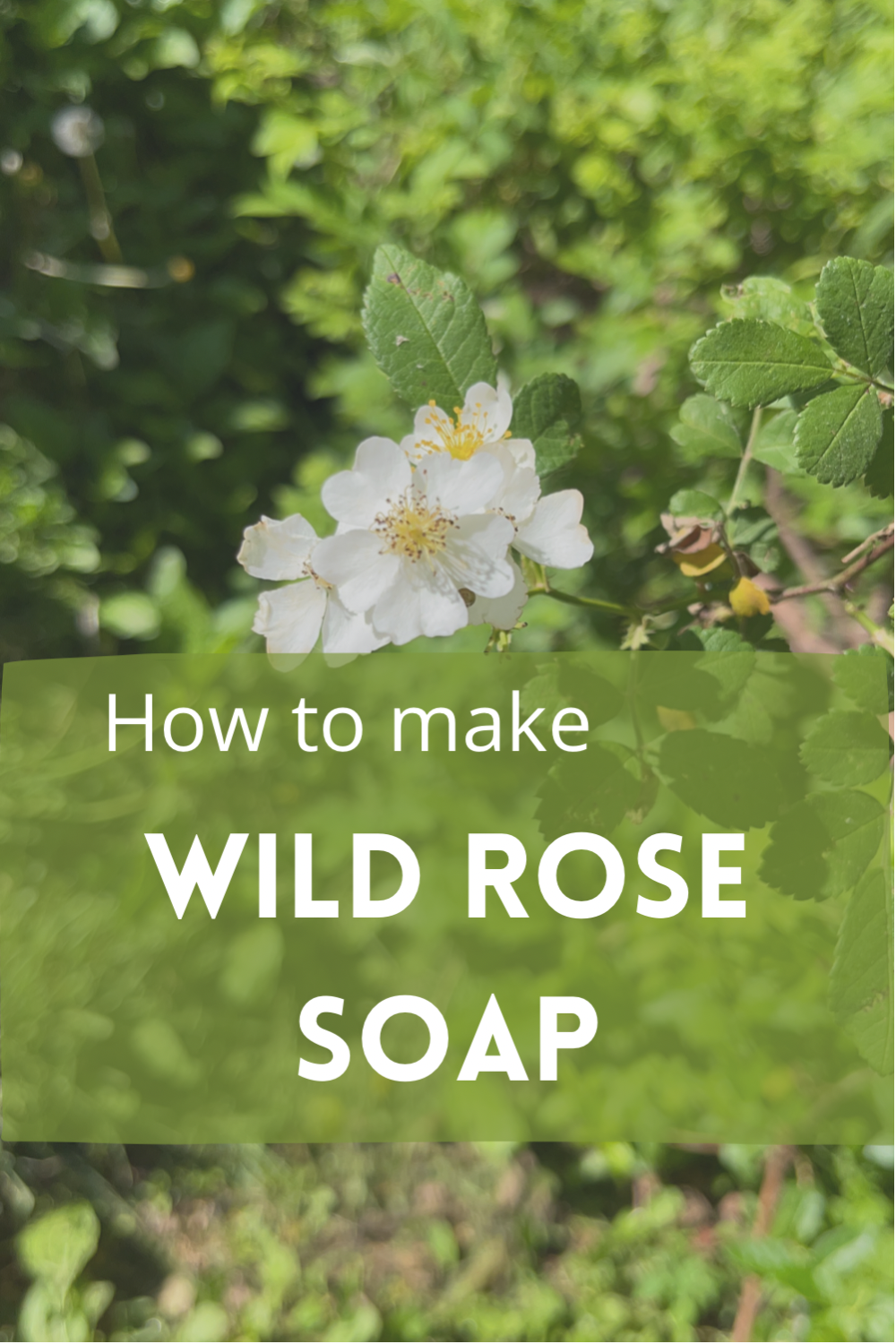How to Make Soap from Wild Roses

Are you looking for a unique take on homemade hot process soap?
Then look no further.
Wild rose soap is a novelty that is fun to make. I used hot process soapmaking, which was quick and easy. How fun to use something growing wild in my yard! It produced a lovely soap that is both unique and usable. (Important qualities, to be sure!)
What is Wild Rose?
Every spring, a sweet fragrance fills the air around our farm. Little bitty flowers start to bloom along our road. They have a big smell for such a tiny flower.

I call them my wild roses. There are many varieties of wild roses. My specific species seems to derive from Asia, called Rosa multiflora. It’s also called baby rose, Japanese rose, or plainly, multiflora rose.
I HAD to bottle up and use these little roses somehow! So soap it was.
How to Make Wild Rose Tea for the Soap

First, you need to pick the roses. Only try to clip off the bloom, not the leaves. Place them in a container to bring into the house.
Then, boil some water. For this soap recipe you will end up needing 9 oz of the “tea”.
I put a handful of roses into a half pint jar, and filled with boiling water. Let the tea steep for several hours.
Strain off the flowers. Now you have “tea”. You will be weighing out 9 oz of this tea on your kitchen scale.
Now for the Soap Part
You will need to gather all your hot process soapmaking materials. Of course, have your recipe ready:
9 oz rose tea
4.78 oz lye
20 oz refined coconut oil
10 oz olive oil
15 drops Geranium essential oil (for an extra floral boost)
Materials needed:
Hot Process Soapmaking
First, weigh out all your ingredients.

Combine the oils into your slow cooker, and heat slowly while you finish up the recipe.
In a well ventilated area with proper safety equipment…
Mix the lye and the tea. Add the lye into the tea bowl.
Mix well, and then let it cool for just a few minutes.

Add the lye/tea mixture into the slow cooker with the warm oils.
Using your immersion blender, blend the contents of the slow cooker until you reach trace.
This means the soap will become “puddingy” and leave a mark of the immersion blender head in the liquid. (Make sense?)

You will cook the soap on LOW for 50 minutes.
When the time is up, turn off the slow cooker.
Slowly add the essential oil, and stir well with a plastic spoon or spatula.
Pour into the soap mold.

Why I Prefer Hot Process
This soap will be ready to use in a day. The heat has sped up saponification of the product, and it will cure faster than the cold process soap. There are benefits to cold process…but I love hot process because of the fast curing time.
This soap will be technically ready to use the next day.
You can cut the bars however you like…
And have a sweet smelling bar to grace your shower. 🙂
This recipe was for HOT PROCESS soap. If you are interested in COLD PROCESS, see this tutorial.


